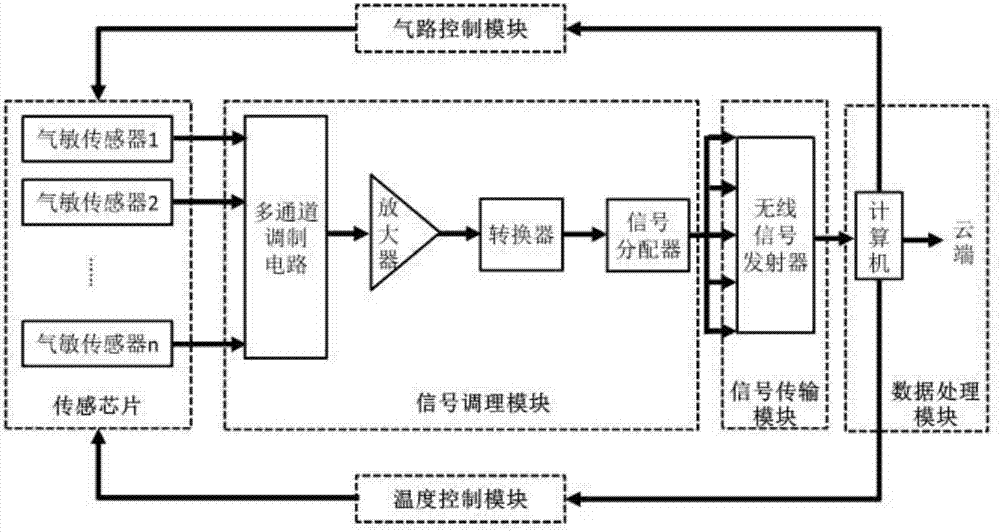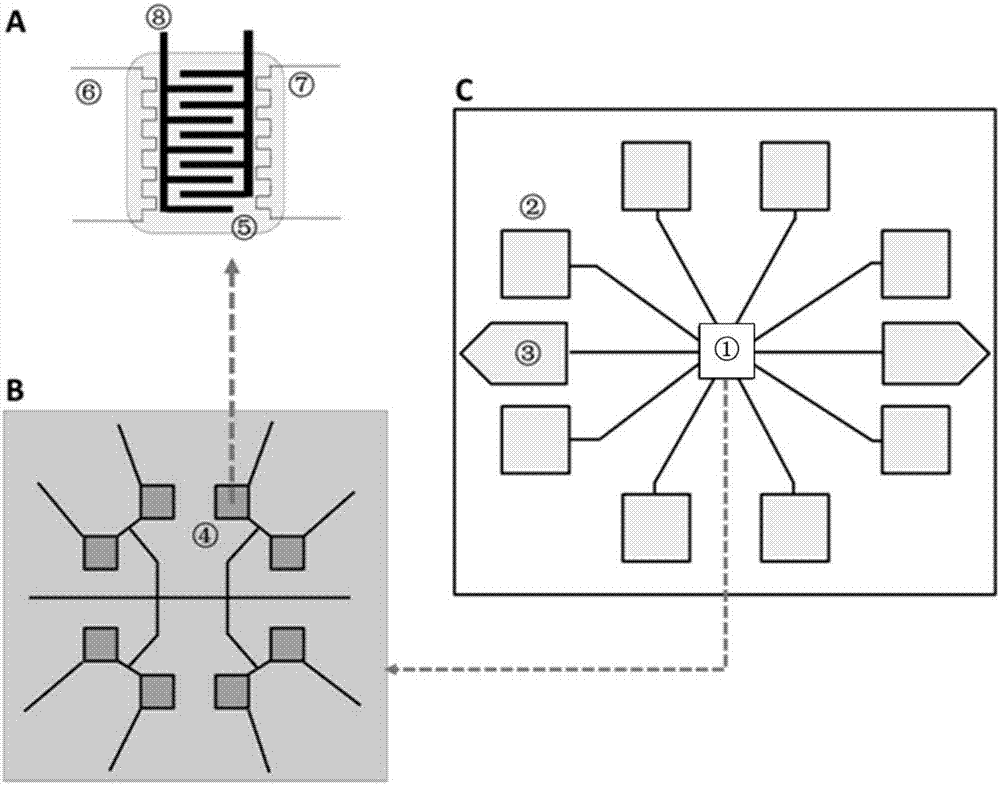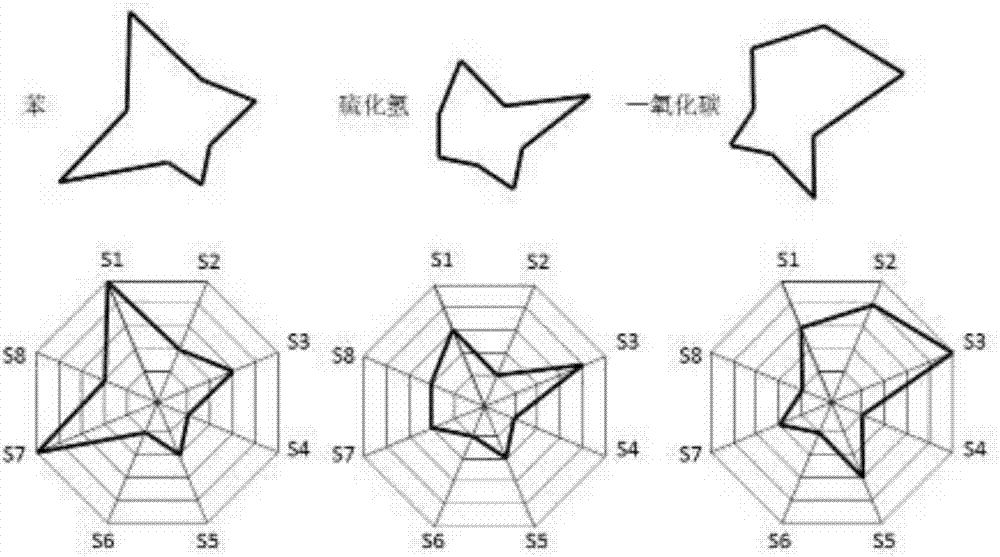Fingerprint recognition system for comprehensive state of hazardous atmosphere
A comprehensive state and fingerprint recognition technology, applied in character and pattern recognition, gallium/indium/thallium compounds, inorganic chemistry, etc., can solve the problem of inability to realize complex atmosphere state recognition and real-time early warning, and the sensor monitoring system does not have multi-channel detection capabilities , lack of wireless signal transmission and other issues
- Summary
- Abstract
- Description
- Claims
- Application Information
AI Technical Summary
Problems solved by technology
Method used
Image
Examples
Embodiment 1
[0023] Dissolve the tin tetrachloride precursor and sodium hydroxide in a deionized aqueous solution, slowly add the sodium hydroxide solution to the tin tetrachloride solution, stir for 30 minutes, transfer the reaction mixture to a polytetrafluoroethylene reactor, and heat At a temperature of 190 degrees Celsius, heat for 8-12 hours. The product is collected by centrifugation and infiltrated with distilled water, ultrasonically cleaned, centrifuged three times, dispersed in an aqueous solution, and dropped onto a specific area of the intersected electrode prepared by a microfabrication method for drying.
Embodiment 2
[0025]Dissolve the tin tetrachloride precursor, ferric chloride precursor, and sodium hydroxide in deionized aqueous solution, slowly add the sodium hydroxide solution to the mixed solution of tin tetrachloride and ferric chloride, stir for 30 minutes, and react The mixture was transferred to a polytetrafluoroethylene reactor, heated to a temperature of 190 degrees Celsius, and heated for 8-12 hours. The product is collected by centrifugation and infiltrated with distilled water, ultrasonically cleaned, centrifuged three times, dispersed in an aqueous solution, and dropped onto a specific area of the intersected electrode prepared by a microfabrication method for drying.
Embodiment 3
[0027] Dissolve the tin tetrachloride precursor, the zinc chloride precursor, and sodium hydroxide in a deionized aqueous solution, slowly add the sodium hydroxide solution to the mixed solution of tin tetrachloride and zinc chloride, stir for 30 minutes, and react The mixture was transferred to a polytetrafluoroethylene reactor, heated to a temperature of 190 degrees Celsius, and heated for 8-12 hours. The product is collected by centrifugation and infiltrated with distilled water, ultrasonically cleaned, centrifuged three times, dispersed in an aqueous solution, and dropped onto a specific area of the intersected electrode prepared by a microfabrication method for drying.
PUM
 Login to View More
Login to View More Abstract
Description
Claims
Application Information
 Login to View More
Login to View More - R&D
- Intellectual Property
- Life Sciences
- Materials
- Tech Scout
- Unparalleled Data Quality
- Higher Quality Content
- 60% Fewer Hallucinations
Browse by: Latest US Patents, China's latest patents, Technical Efficacy Thesaurus, Application Domain, Technology Topic, Popular Technical Reports.
© 2025 PatSnap. All rights reserved.Legal|Privacy policy|Modern Slavery Act Transparency Statement|Sitemap|About US| Contact US: help@patsnap.com



